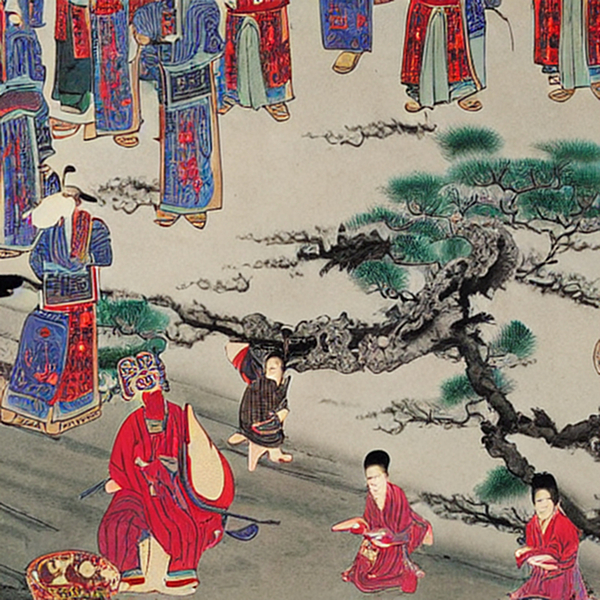Wing Chun Kung Fu’s Cultural Significance: How it Fits into Chinese History and Traditions
By Maurice Novoa a master under the Yuen Kay Shan, Ip Man and Pan Nam lineages.
Introduction:
Wing Chun Kung Fu, a traditional Chinese martial art, holds significant cultural value within the rich tapestry of Chinese history and traditions. With its origins dating back centuries, Wing Chun has not only influenced the development of Chinese martial arts but also embodies the essence of Chinese philosophy, values, and identity. This article delves into the cultural significance of the Kung Fu style, exploring its historical background, core principles, connection to Chinese history, and its relevance in modern times.
Historical Background
Wing Chun traces its roots to the turbulent times of ancient China. Legend has it that the art was developed 5 elders of the Shaolin temple and a Buddhist nun named Ng Mui at the Shaolin Temple during the Qing Dynasty. Ng Mui, renowned for her mastery of martial arts, created the style as a practical and effective self-defense system, emphasizing techniques suitable for people of all sizes and genders.
Core Principles of Wing Chun Kung Fu
Central to Wing Chun are its core principles that define its unique approach to combat. The centerline theory, which focuses on controlling the opponent’s centerline, forms the foundation of Wing Chun’s techniques. By maintaining dominance over this imaginary line, practitioners gain a strategic advantage. Another fundamental principle is economy of motion, wherein practitioners strive for efficiency and effectiveness by utilizing only necessary movements. The art’s emphasis on simplicity and directness further enhances its practicality.
Cultural Significance of Wing Chun Kung Fu
Wing Chun’s cultural significance extends beyond its physical techniques. It embodies the deep-rooted values and philosophy of the Chinese people. The art promotes discipline, respect, and humility, mirroring traditional Confucian and Taoist principles. Moreover, it serves as a guardian of Chinese martial arts heritage, preserving ancient techniques and wisdom passed down through generations.
Wing Chun Kung Fu in Chinese History
Throughout Chinese history, Wing Chun has played a notable role in various periods. During the Ming and Qing Dynasties, The style’s masters were known for their exceptional skills and contributions to martial arts development. Notable practitioners, such as Ip Man, Yip Man’s most famous student, and Bruce Lee, his disciple, helped popularize the style and elevate its status.
Wing Chun Kung Fu in Modern Times
In the modern era, Wing Chun has gained global recognition and acceptance. Its practicality, efficiency, and adaptability have attracted practitioners worldwide. The art’s influence extends beyond martial arts circles, permeating popular culture through movies, books, and video games. Additionally, its’s principles have inspired the evolution of other martial arts styles, leading to cross-pollination and the development of hybrid systems.
Training and Discipline
Training in Wing Chun encompasses not only physical techniques but also the cultivation of character and discipline. Traditional training methods, often involving repetitive drills and forms, instill patience, perseverance, and mental fortitude. The art’s emphasis on lineage and the master-disciple relationship ensures the transfer of knowledge and values from one generation to the next, fostering a sense of continuity and respect.
Conclusion
Wing Chun’s cultural significance lies in its ability to encapsulate the essence of Chinese history, philosophy, and values. As a martial art with deep roots in ancient China, it serves as a symbol of cultural heritage and identity. The style’s principles and techniques continue to inspire and empower practitioners worldwide, while its historical legacy contributes to the understanding and appreciation of Chinese history and traditions.
FAQs
Q: Is the style suitable for everyone?
A: Yes, It’s practical approach makes it accessible and effective for people of all ages and genders.
Q: Can the style be learned without a master?
A: While having a qualified instructor is beneficial, there are resources available for self-study. However, seeking guidance from a knowledgeable practitioner is recommended for proper understanding and progress.
Q: Does the style focus on strength or technique?
A: The style emphasizes technique and efficiency over brute strength, making it suitable for individuals with varying levels of physical strength.
Q: Can the style be used for self-defense?
A: Yes, It’s practical techniques and principles make it highly effective for self-defense situations.
Q: How long does it take to become proficient in the style?
A: The time required to become proficient varies depending on factors such as dedication, practice, and natural ability. Regular training and consistency are key to progress.

